Best Python Dictionary Iteration Guides to Buy in January 2026
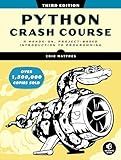
Python Crash Course, 3rd Edition: A Hands-On, Project-Based Introduction to Programming


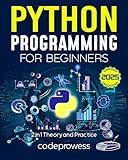
Python Programming for Beginners: The Complete Python Coding Crash Course - Boost Your Growth with an Innovative Ultra-Fast Learning Framework and Exclusive Hands-On Interactive Exercises & Projects


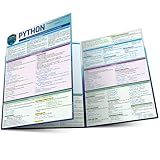
Python Programming Language: a QuickStudy Laminated Reference Guide


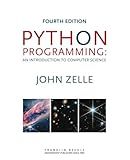
Python Programming: An Introduction to Computer Science, Fourth Edition


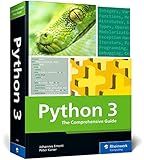
Python 3: The Comprehensive Guide to Hands-On Python Programming (Rheinwerk Computing)


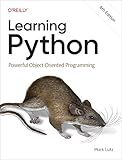
Learning Python: Powerful Object-Oriented Programming


To iterate through a Python dictionary, you can use various methods such as loops and comprehension. Here is an explanation of a few common techniques:
- Using a for-loop: my_dict = {'key1': 'value1', 'key2': 'value2', 'key3': 'value3'} for key in my_dict: print(key, my_dict[key]) This approach iterates over the keys of the dictionary and then accesses the corresponding values using those keys.
- Using the items() method: my_dict = {'key1': 'value1', 'key2': 'value2', 'key3': 'value3'} for key, value in my_dict.items(): print(key, value) The items() method returns both keys and values as tuples, which can be easily unpacked in the loop.
- Using a list comprehension: my_dict = {'key1': 'value1', 'key2': 'value2', 'key3': 'value3'} results = [(key, value) for key, value in my_dict.items()] print(results) This approach creates a new list of tuples containing all key-value pairs in the dictionary using a comprehension.
- Using a generator expression: my_dict = {'key1': 'value1', 'key2': 'value2', 'key3': 'value3'} results = ((key, value) for key, value in my_dict.items()) for key, value in results: print(key, value) Here, we use a generator expression to iterate through the dictionary items, allowing lazy evaluation if you don't need all the results at once.
These methods provide different ways to loop through the keys and values of a dictionary, depending on your specific requirements. Choose the approach that best suits your needs while considering factors like simplicity, readability, and performance.
What is the technique for iterating through a Python dictionary using a while loop?
The technique for iterating through a Python dictionary using a while loop involves converting the dictionary into an iterable form and then using a while loop to iterate through the elements.
Here is an example of how you can achieve this:
# Create a dictionary my_dict = {'a': 1, 'b': 2, 'c': 3}
Get the keys of the dictionary
keys = my_dict.keys()
Convert the keys into a list
keys_list = list(keys)
Get the length of the list
length = len(keys_list)
Initialize the counter
i = 0
Iterate through the dictionary using a while loop
while i < length: # Get the current key key = keys_list[i]
# Access the corresponding value from the dictionary
value = my\_dict\[key\]
# Print the key-value pair
print(key, value)
# Increment the counter
i += 1
Note that dictionaries are inherently unordered data structures, so the order of iteration may not be consistent across multiple runs. If you require a specific order, you should consider using an OrderedDict or sorting the keys before iteration.
What is the purpose of iterating through a Python dictionary?
The purpose of iterating through a Python dictionary is to perform operations on each key-value pair present in the dictionary. Iterating through a dictionary allows you to access and manipulate the data stored in it. You can use this process to extract specific values, modify the values, delete items, perform calculations, or even create new dictionaries based on the existing data. By iterating through a dictionary, you can access all the elements and apply specific operations efficiently.
How to edit dictionary values while iterating through a Python dictionary?
To edit dictionary values while iterating through a Python dictionary, you can loop through the dictionary using a for loop to access each key-value pair, and then modify the value as desired. Here's an example:
# Sample dictionary my_dict = {'a': 1, 'b': 2, 'c': 3}
Iterate through the dictionary
for key in my_dict: # Modify the value my_dict[key] = my_dict[key] * 2
Print the modified dictionary
print(my_dict)
Output:
{'a': 2, 'b': 4, 'c': 6}
In this example, we iterate through each key in the dictionary my_dict. We use the key to access the corresponding value using the syntax my_dict[key], and then modify it by multiplying by 2.
How to handle KeyError exceptions while iterating through a Python dictionary?
To handle KeyError exceptions while iterating through a Python dictionary, you can use the try-except block. The KeyError exception occurs when you try to access a key that does not exist in the dictionary. Here's an example:
dictionary = {'key1': 'value1', 'key2': 'value2', 'key3': 'value3'}
for key in dictionary: try: value = dictionary[key] # Do something with the value except KeyError: print(f"KeyError: Key '{key}' does not exist in the dictionary")
In the above code snippet, the try block attempts to access each key in the dictionary using dictionary[key]. If the key exists, the corresponding value is retrieved, and you can perform the desired operations with it. However, if a KeyError occurs, the except block is executed, which prints an error message indicating the missing key.
Feel free to customize the code inside the except block based on your specific requirements for handling the KeyError exceptions.
What is the way to access dictionary values directly while iterating through a Python dictionary?
To access dictionary values directly while iterating through a Python dictionary, you can use the .values() method. Here's an example:
my_dict = {"key1": "value1", "key2": "value2", "key3": "value3"}
for value in my_dict.values(): print(value)
This will iterate over the dictionary's values and print each value individually. Output:
value1 value2 value3
Note that this method allows you to only access the values, without the corresponding keys. If you also need to access the keys simultaneously, you can use the .items() method instead, which provides both the key and value in each iteration.
How to iterate through a dictionary sorted by values in Python?
To iterate through a dictionary in Python sorted by values, you can use the sorted() function along with the items() method of the dictionary. By passing a lambda function as the key argument to sorted(), you can specify the value by which to sort the dictionary items. Here's an example:
my_dict = {'a': 5, 'b': 2, 'c': 8, 'd': 1}
Sort the dictionary by values in ascending order
sorted_dict = sorted(my_dict.items(), key=lambda x: x[1])
Iterate through the sorted dictionary
for key, value in sorted_dict: print(key, value)
This will output:
d 1 b 2 a 5 c 8
In the key=lambda x: x[1] expression, x represents each item in the dictionary (key-value pair) and x[1] is used to specify that sorting should be based on the second element (the value) of each pair.
